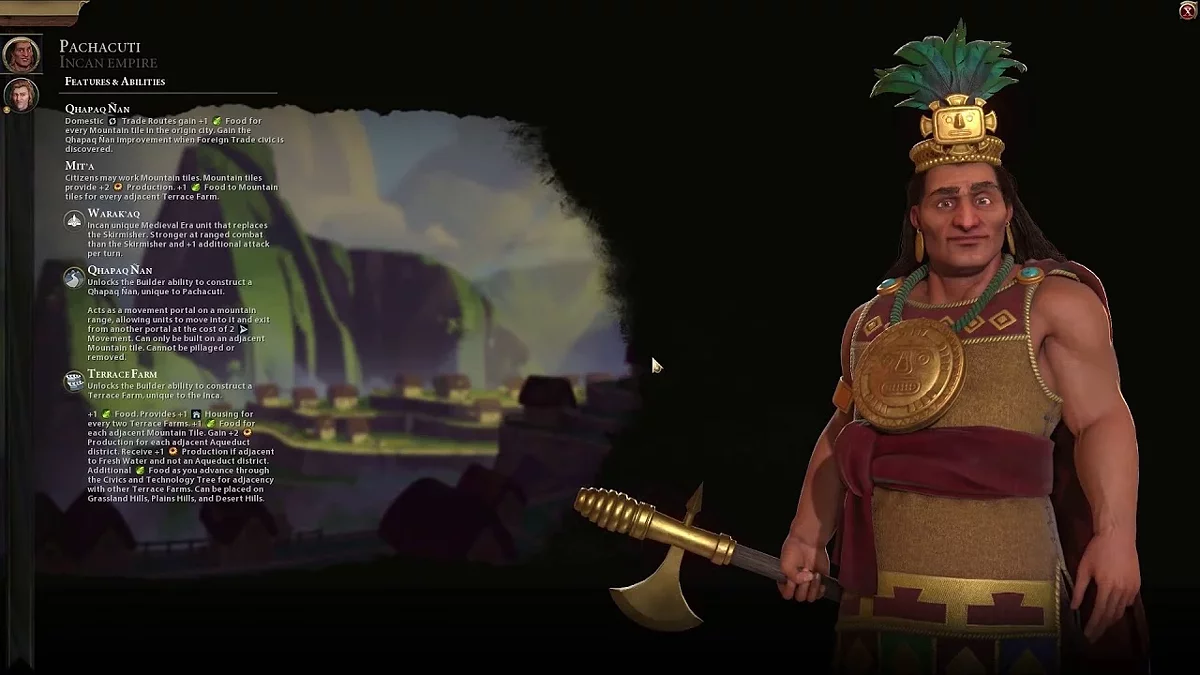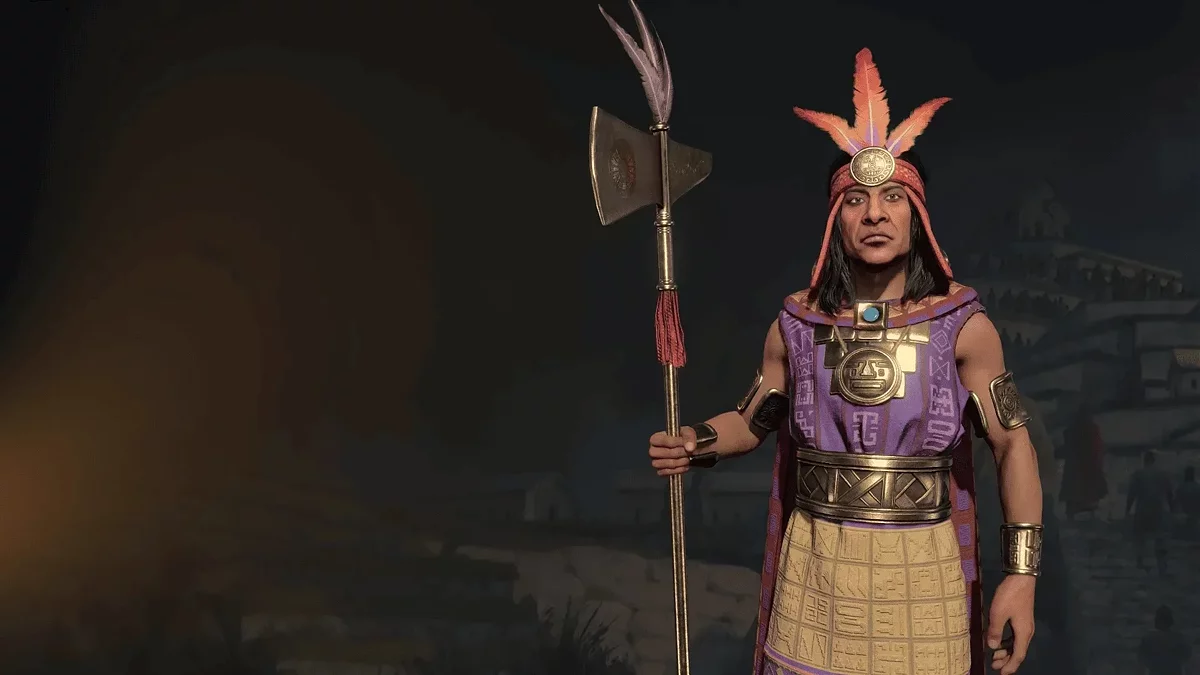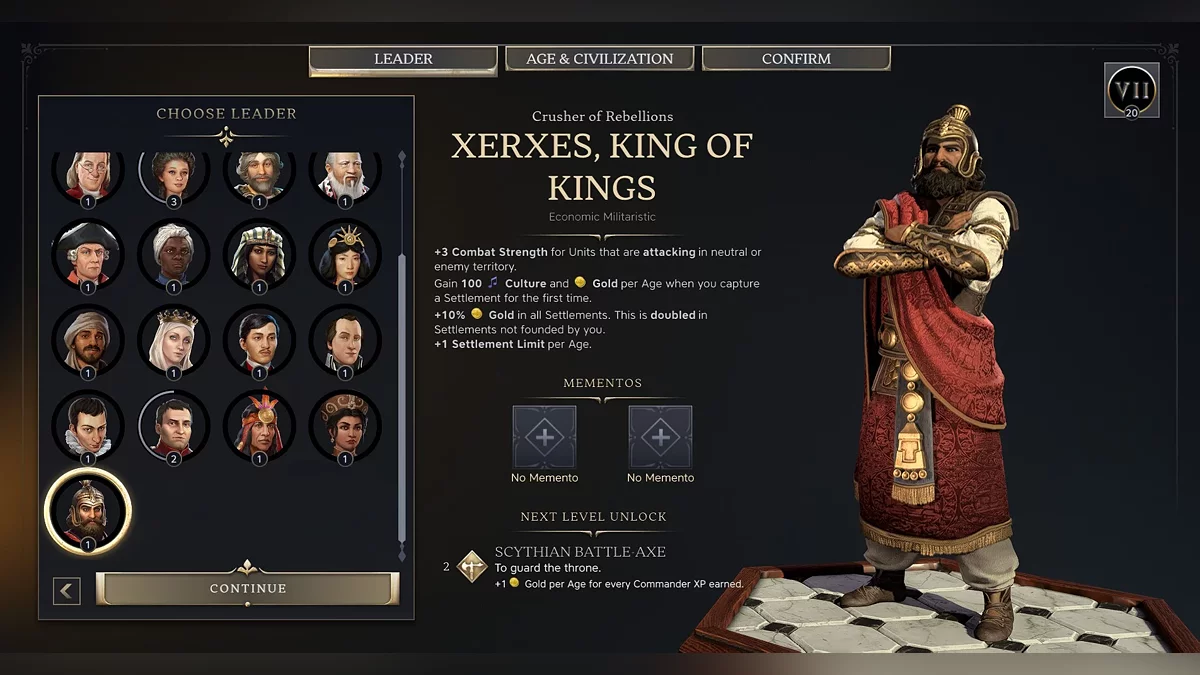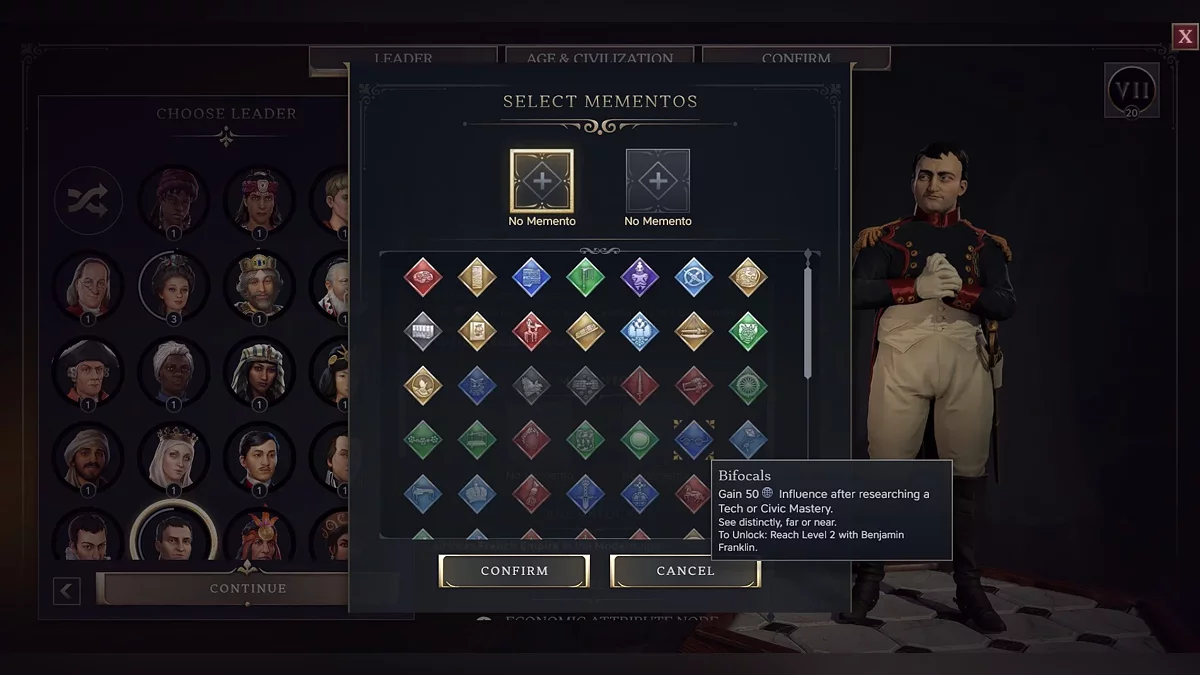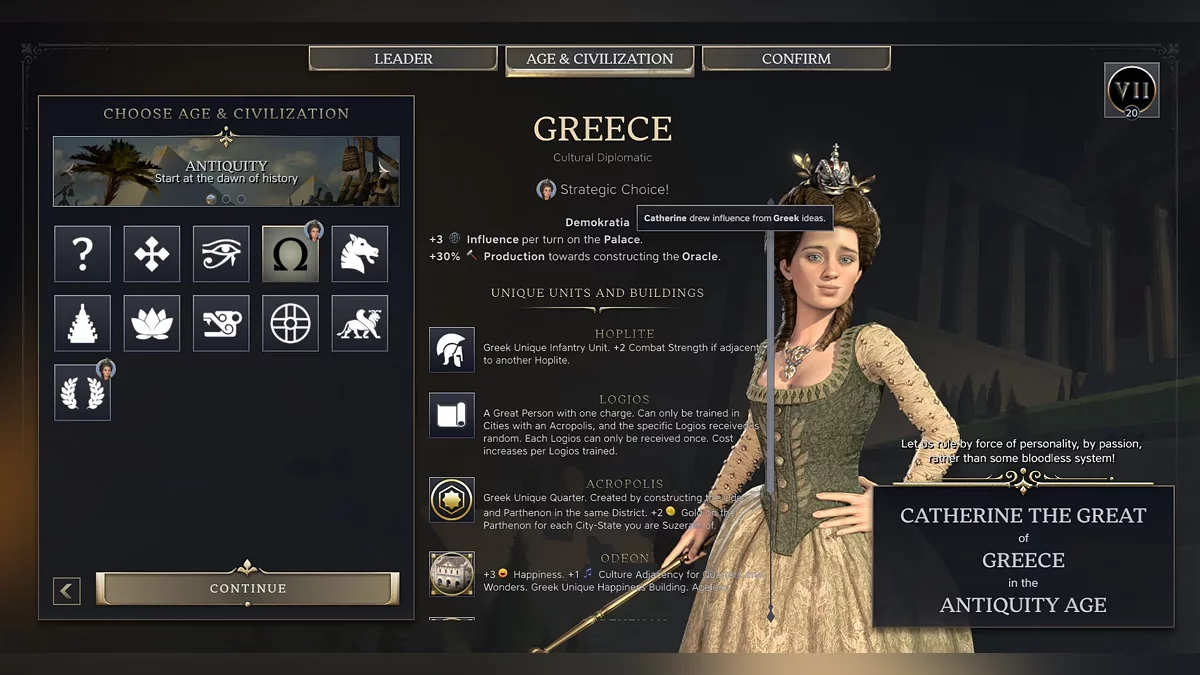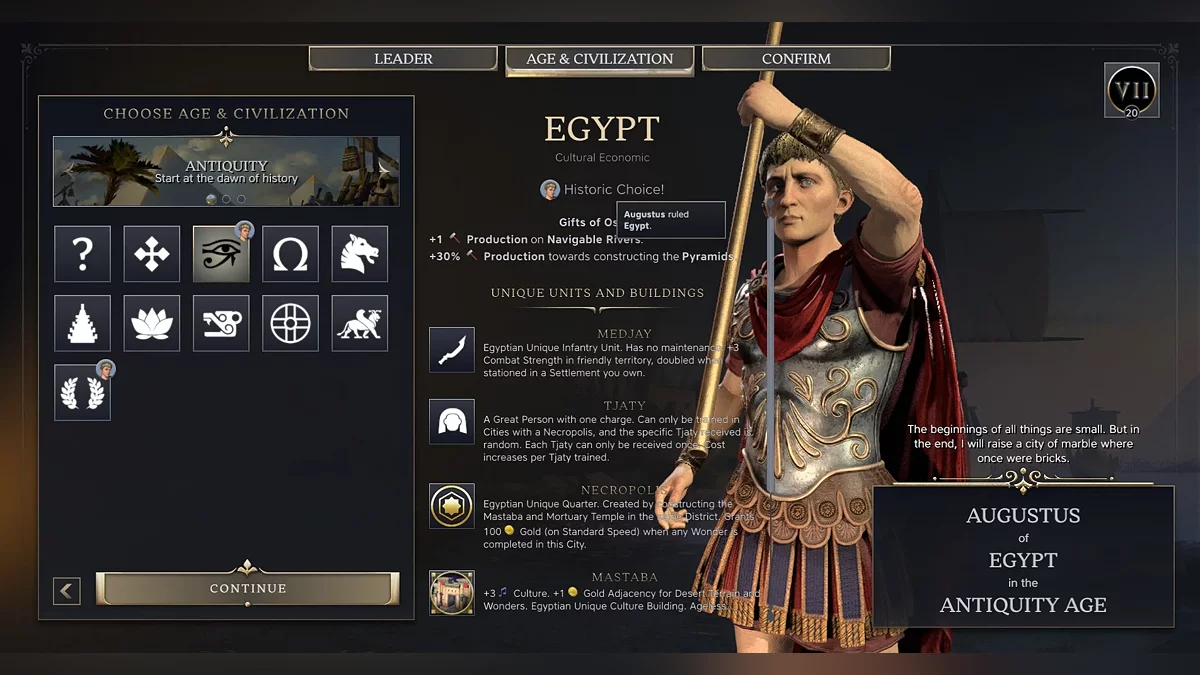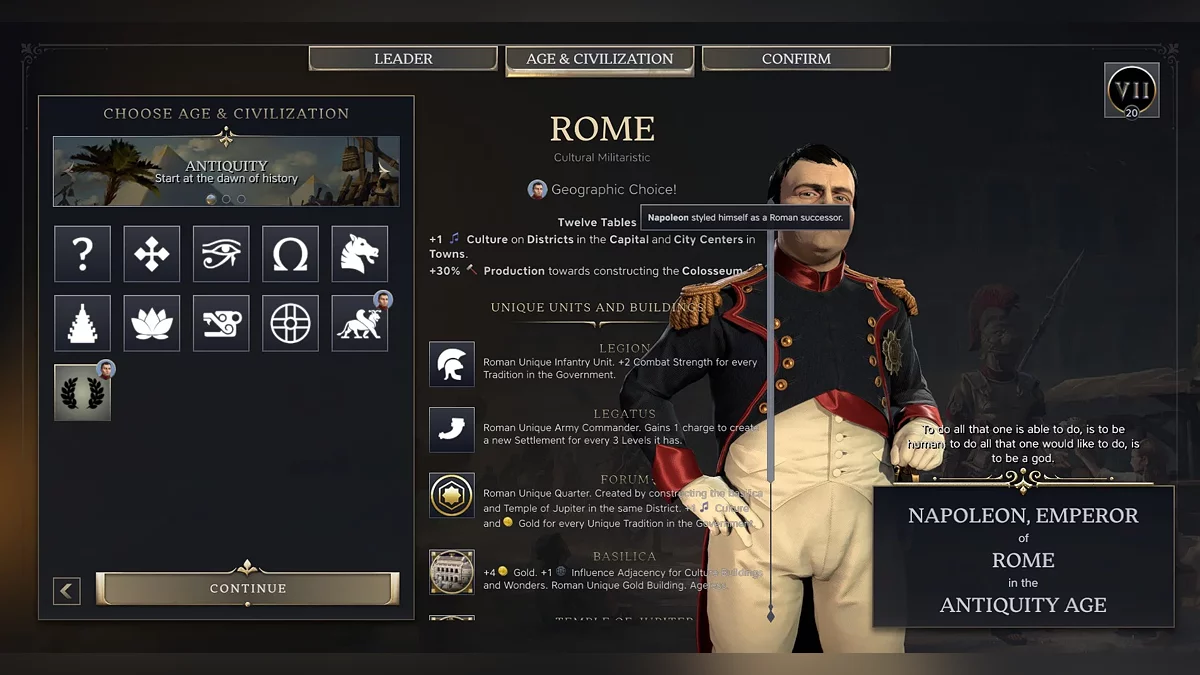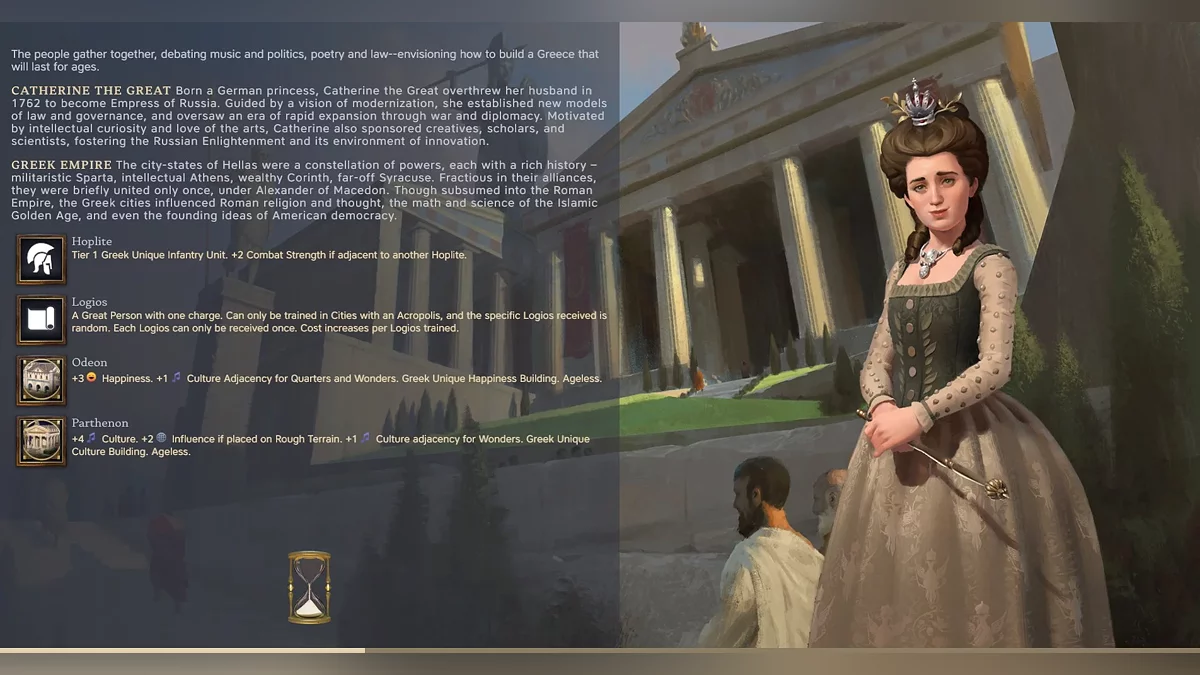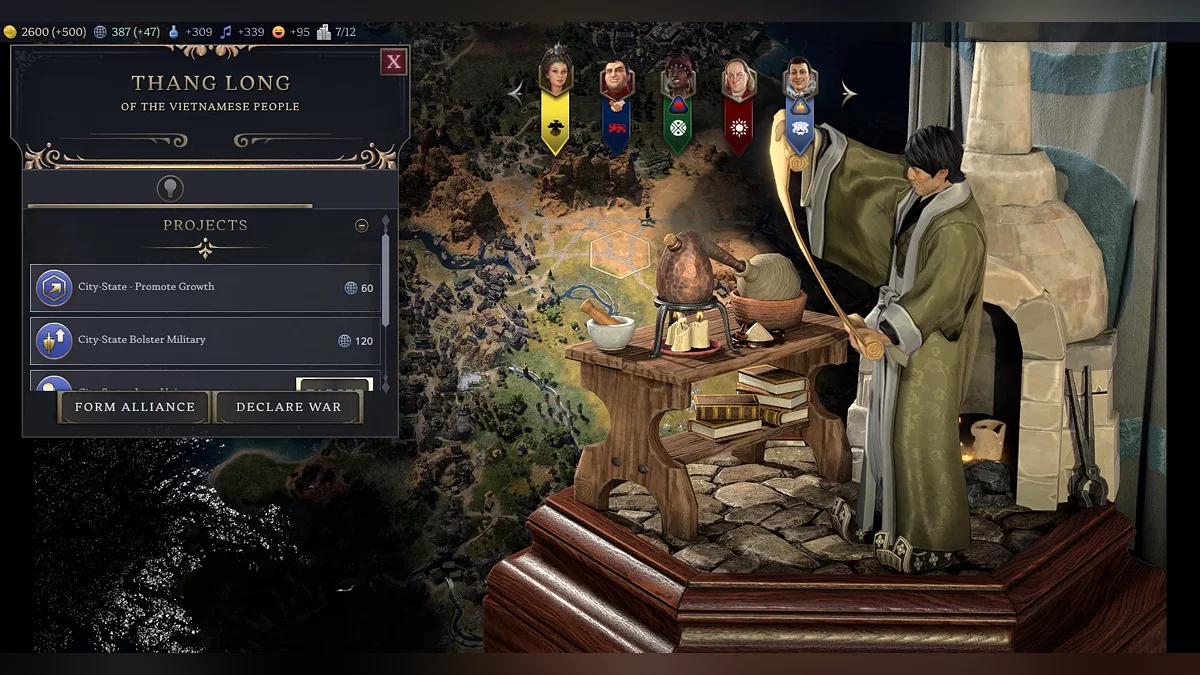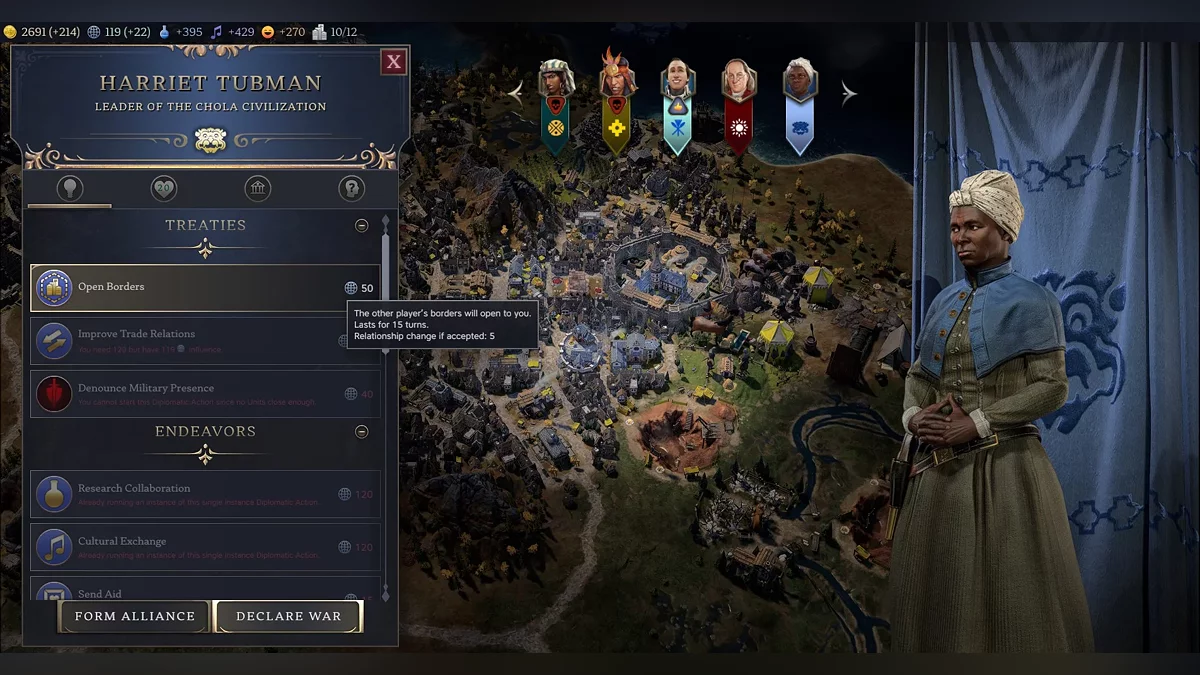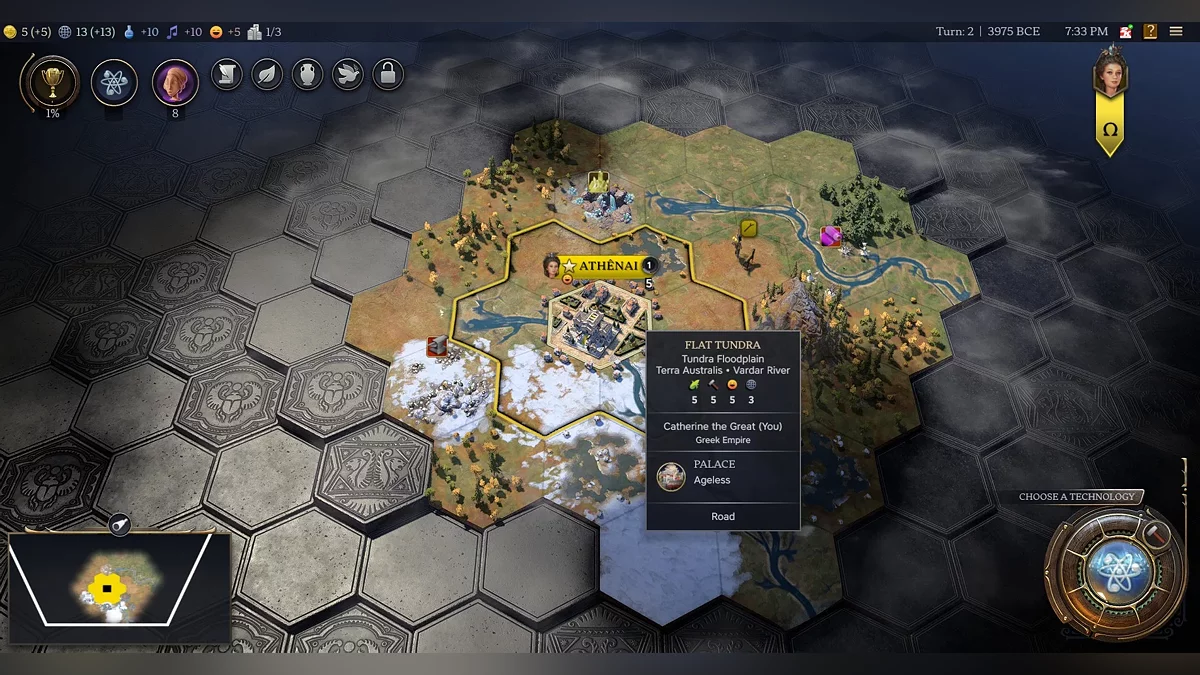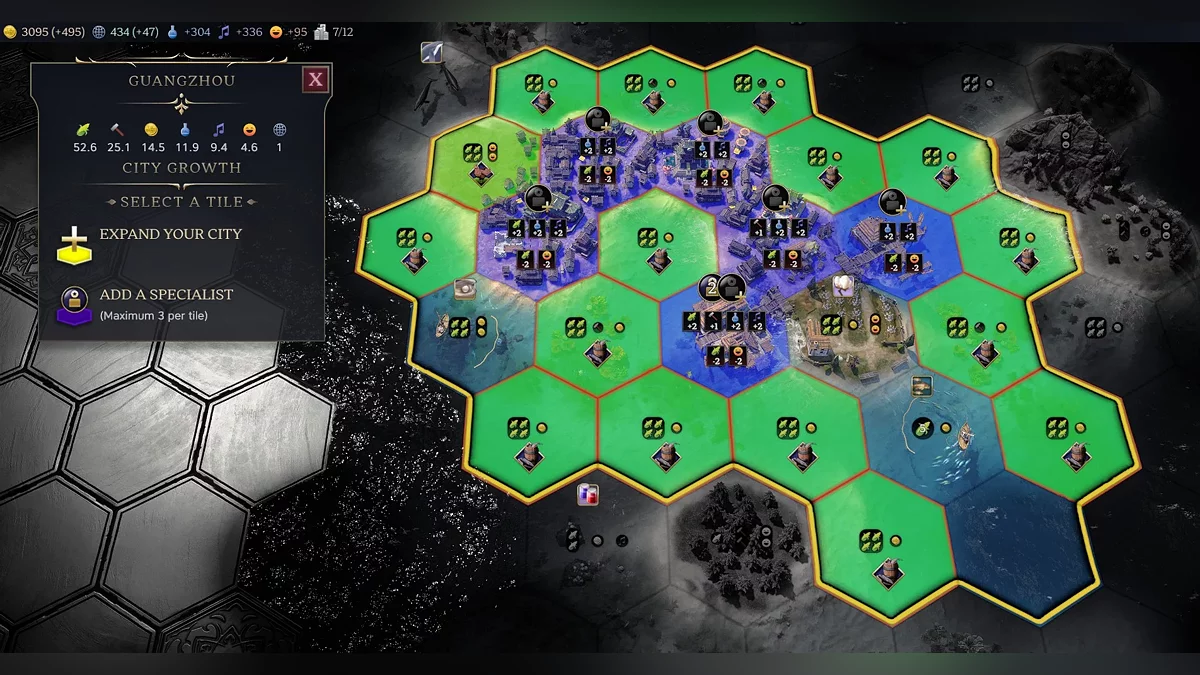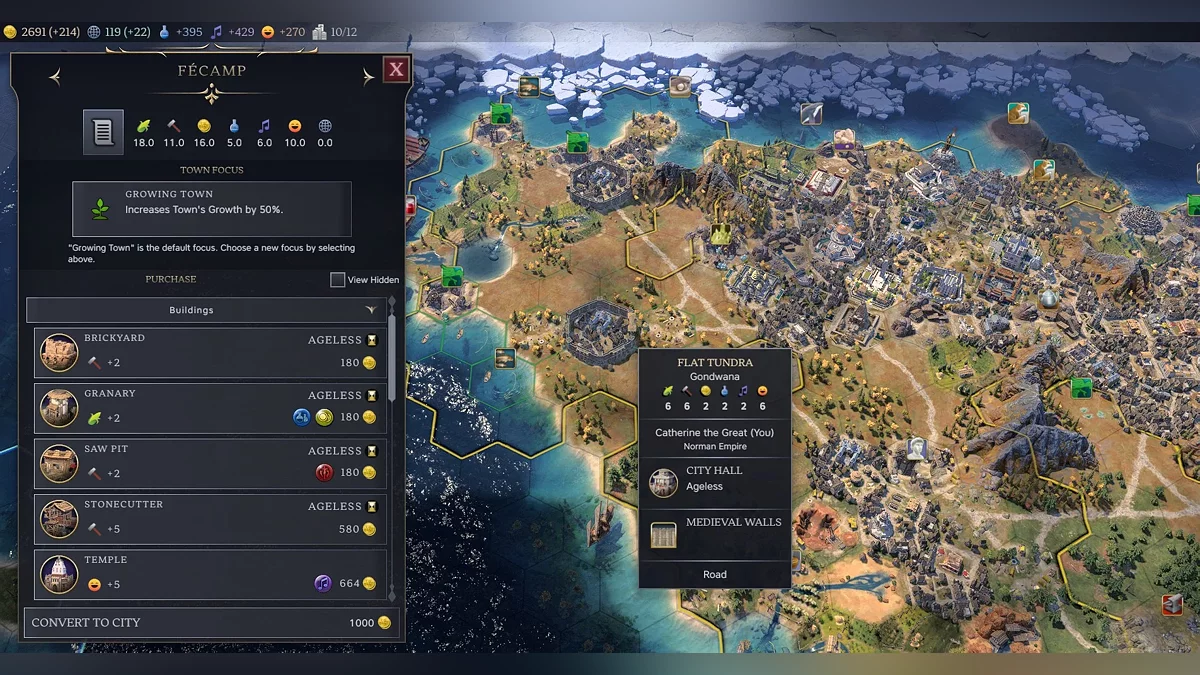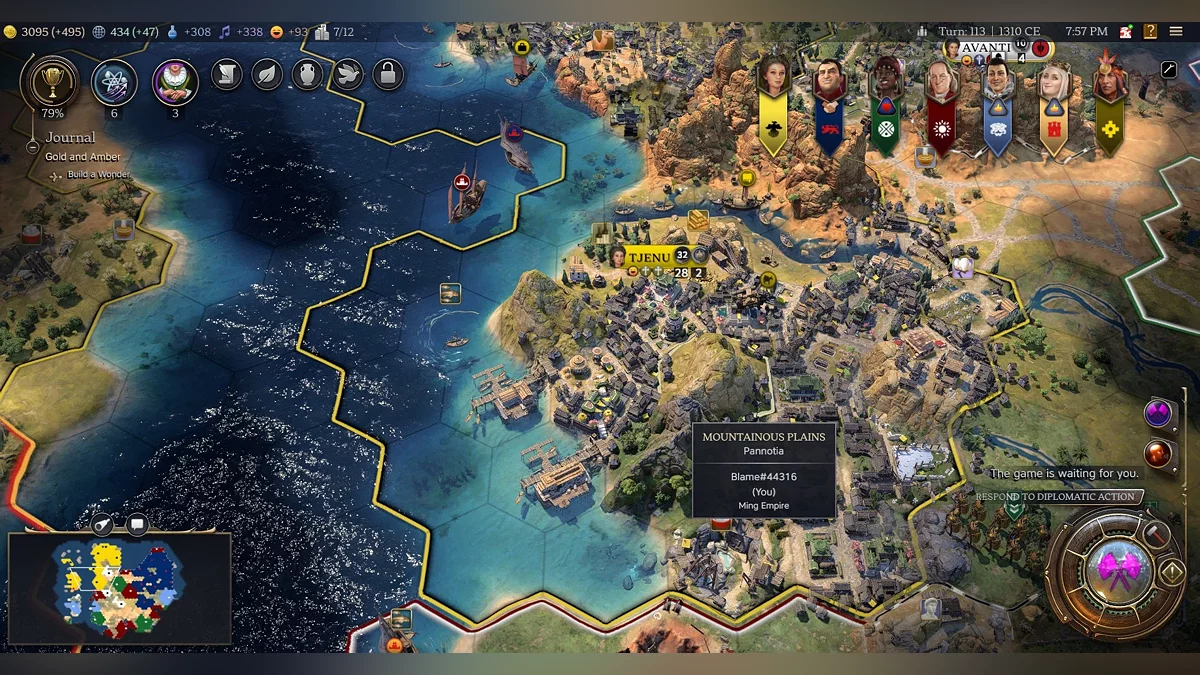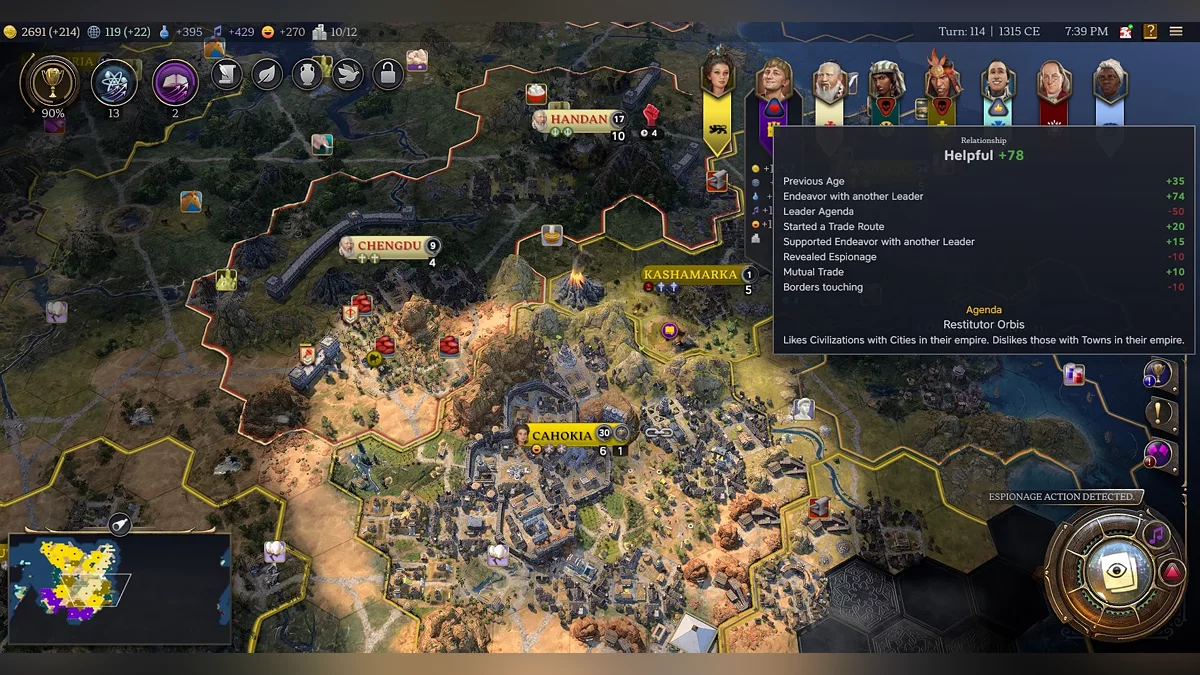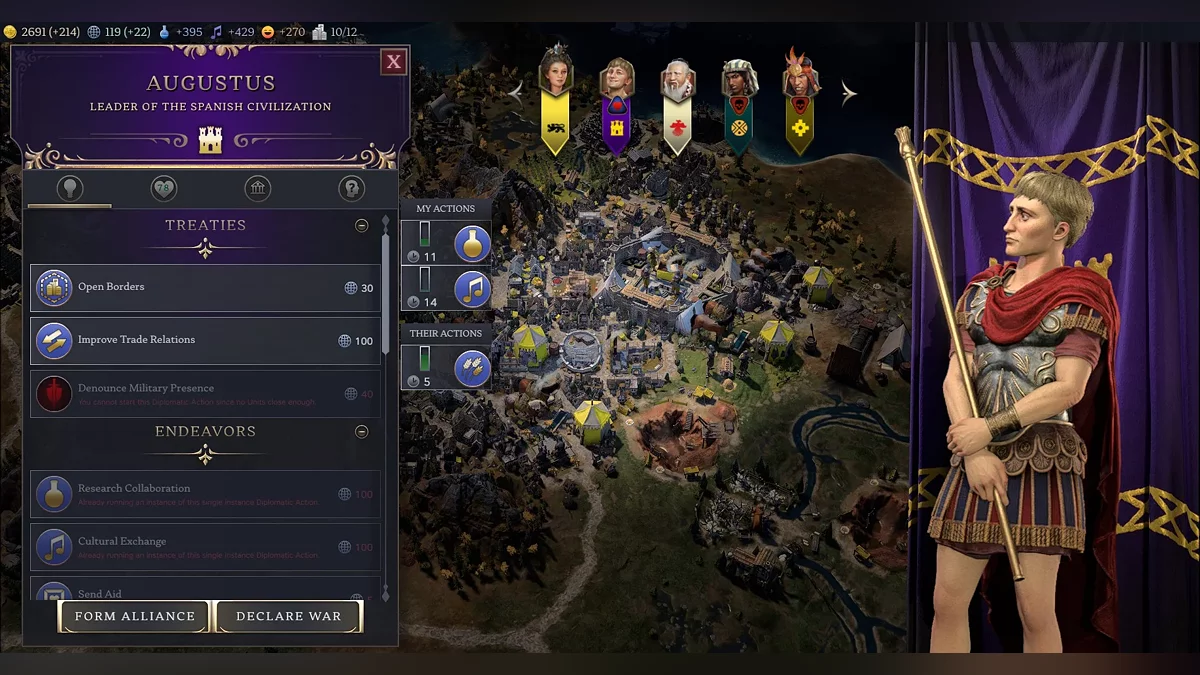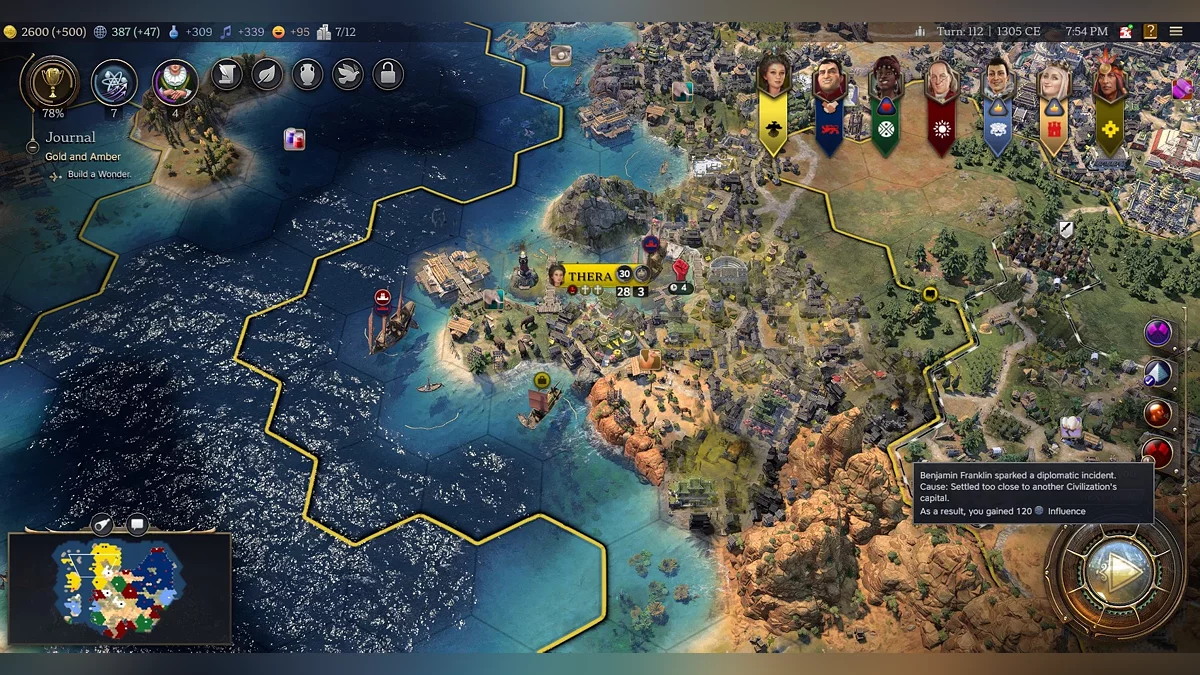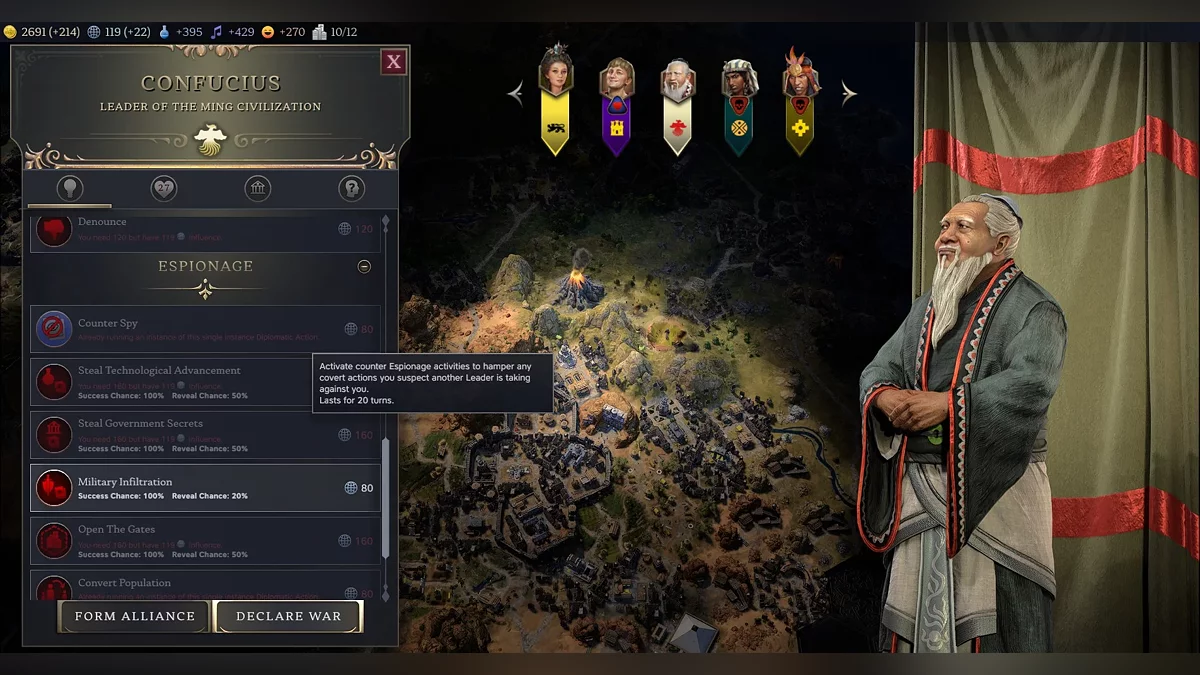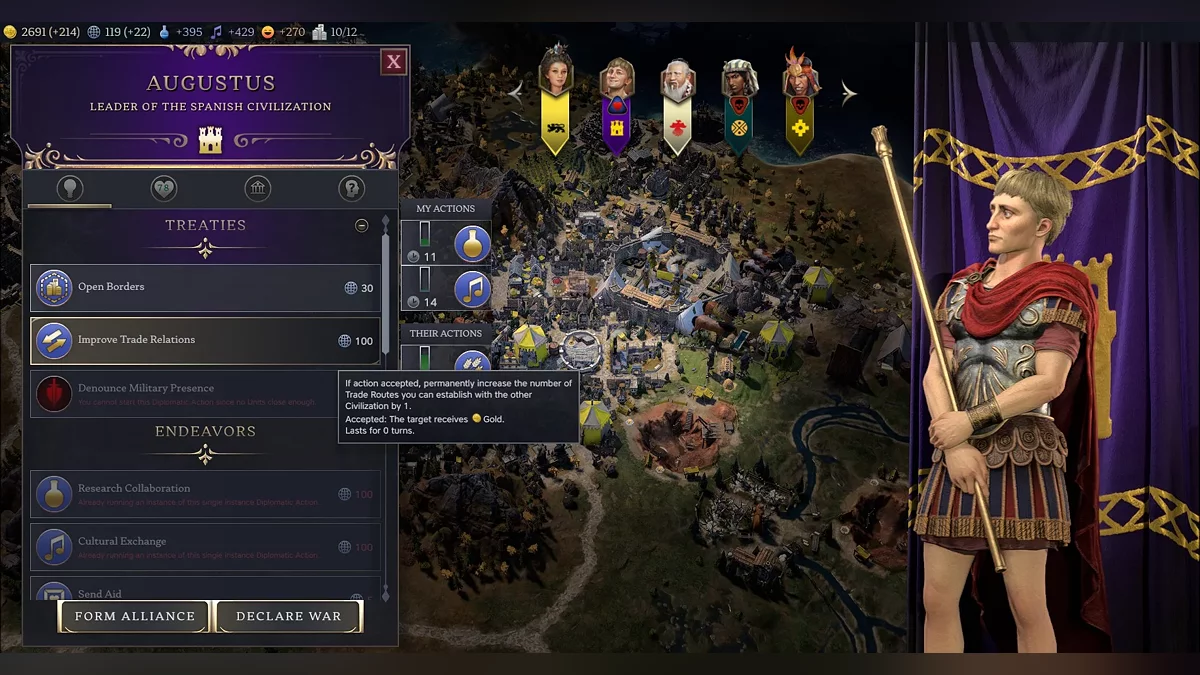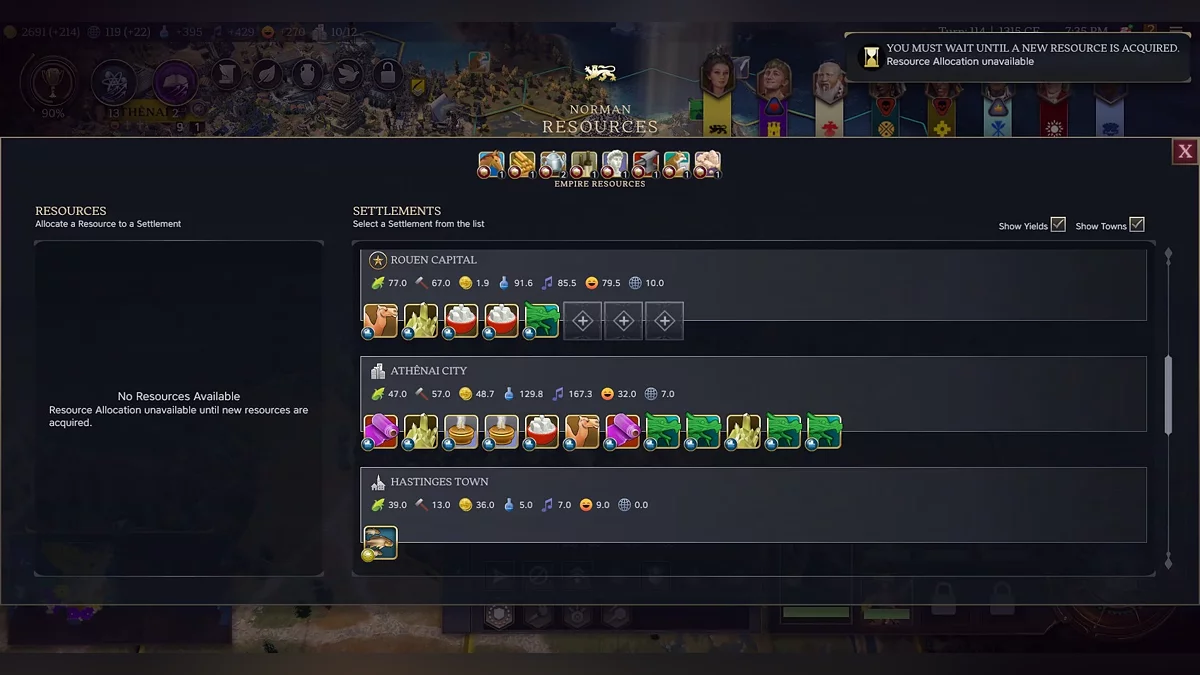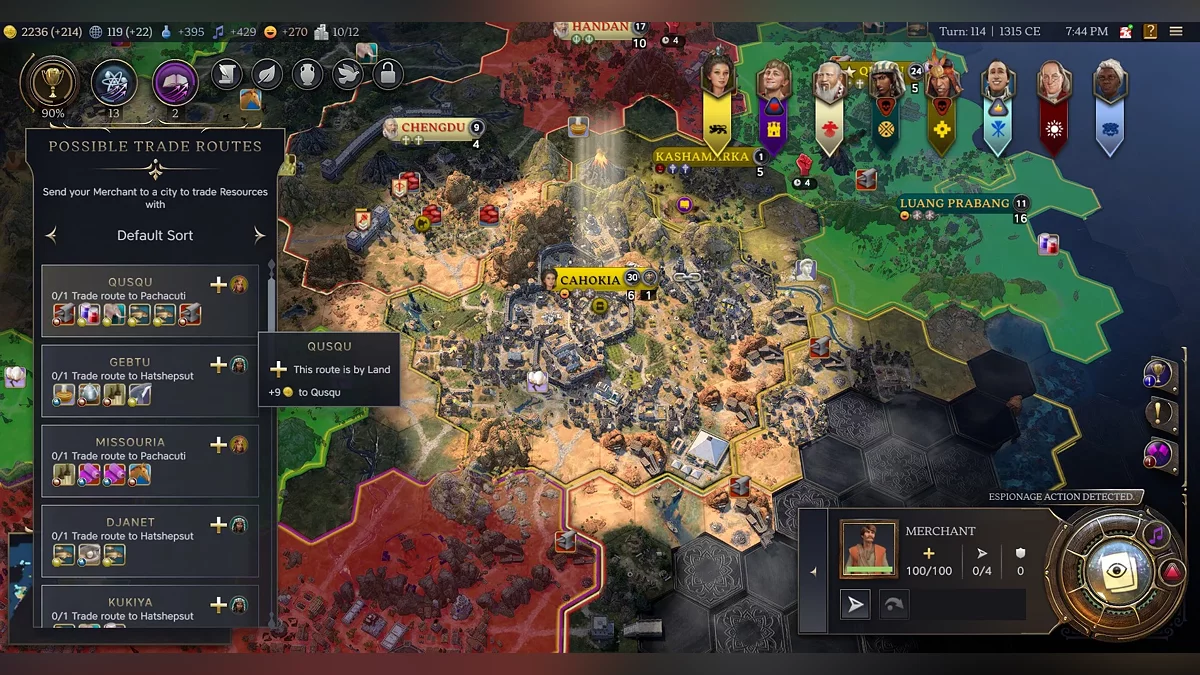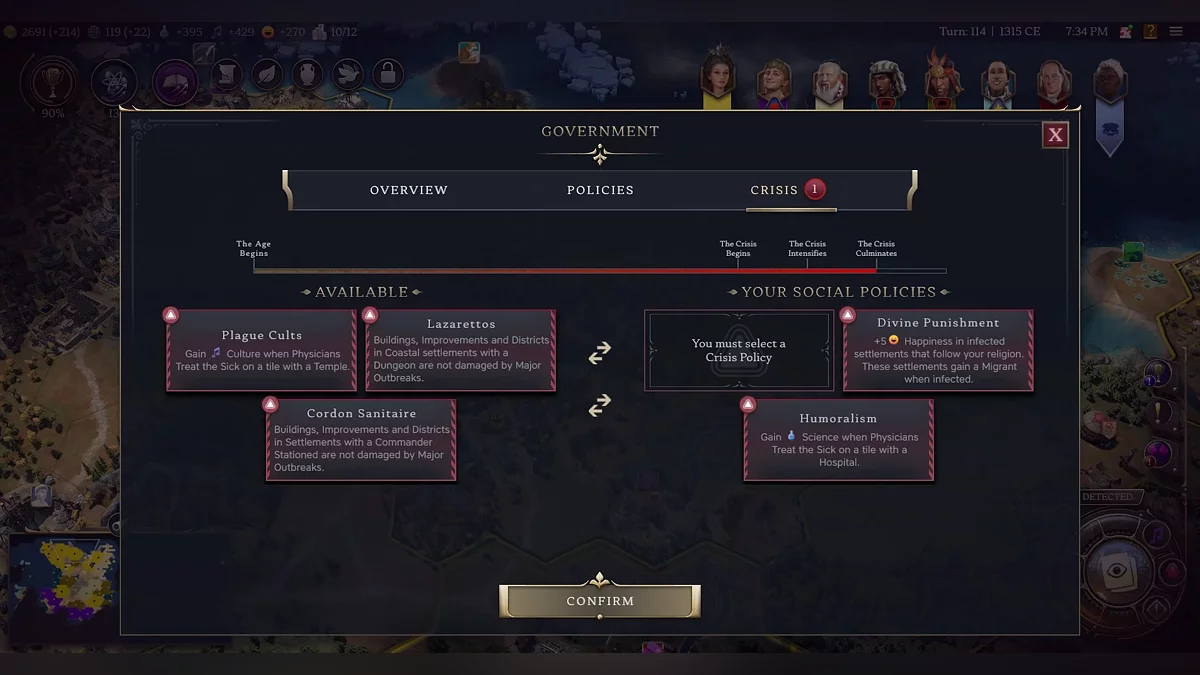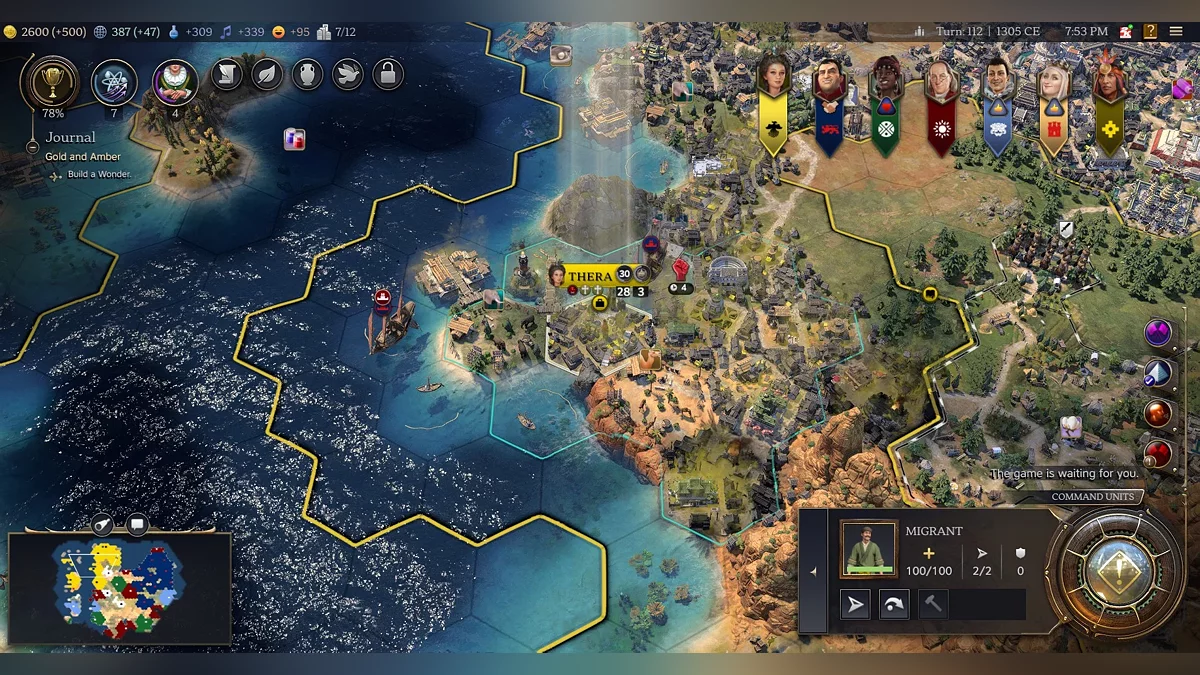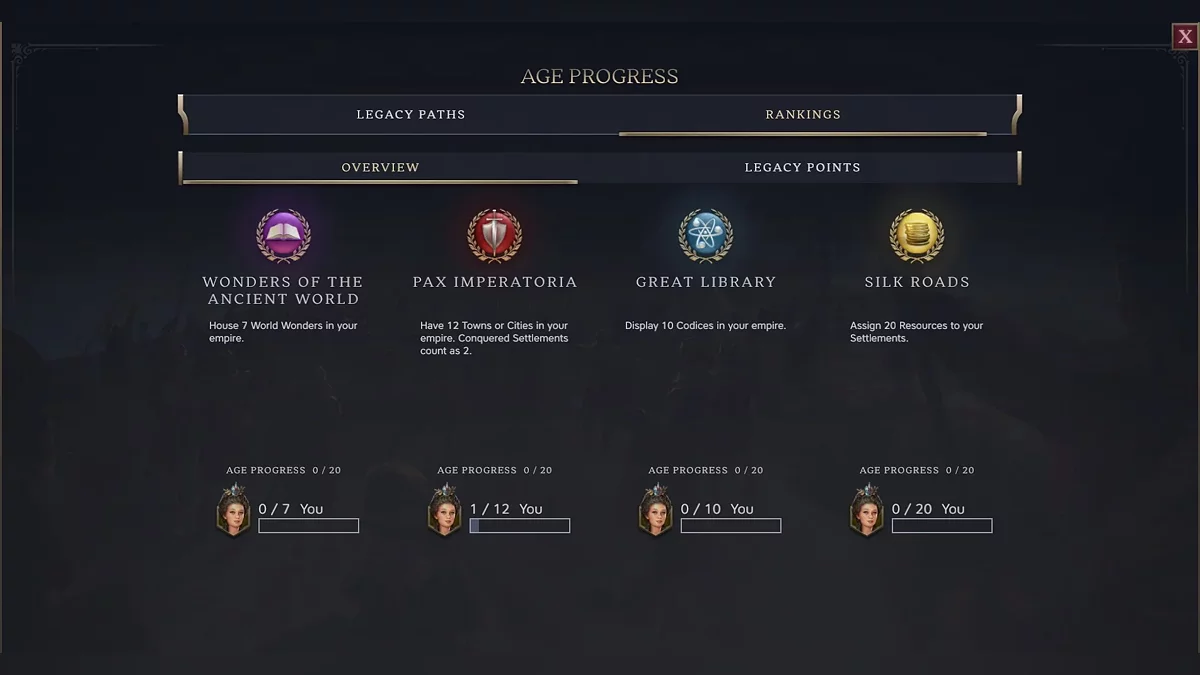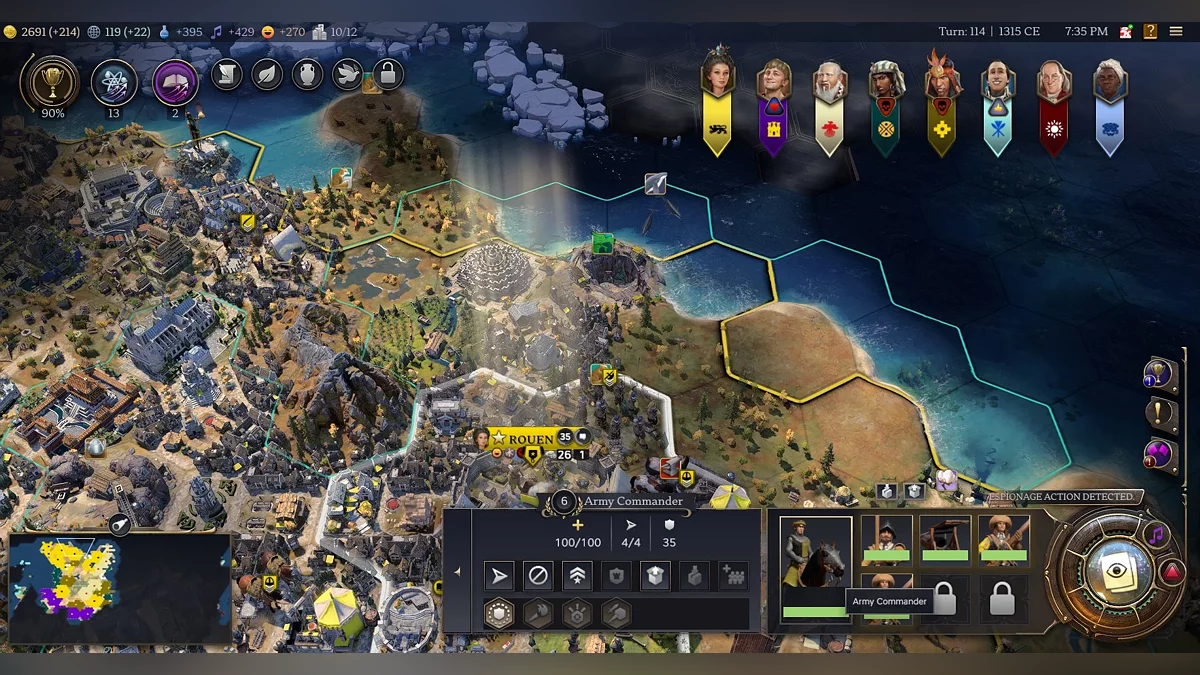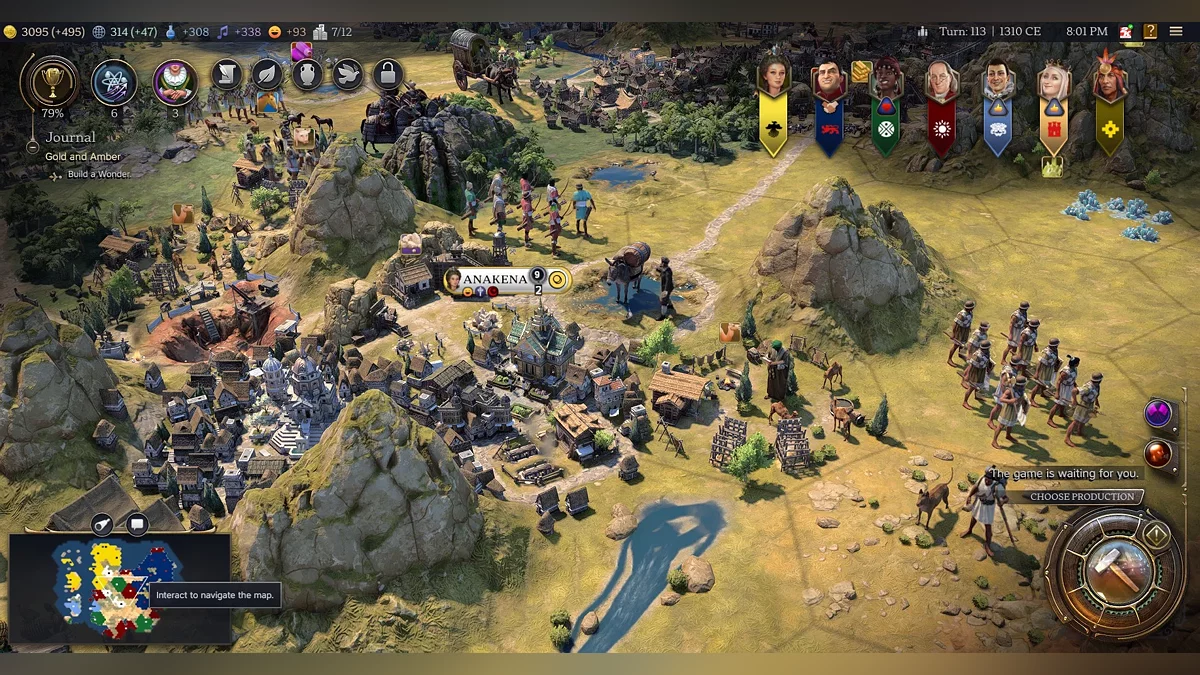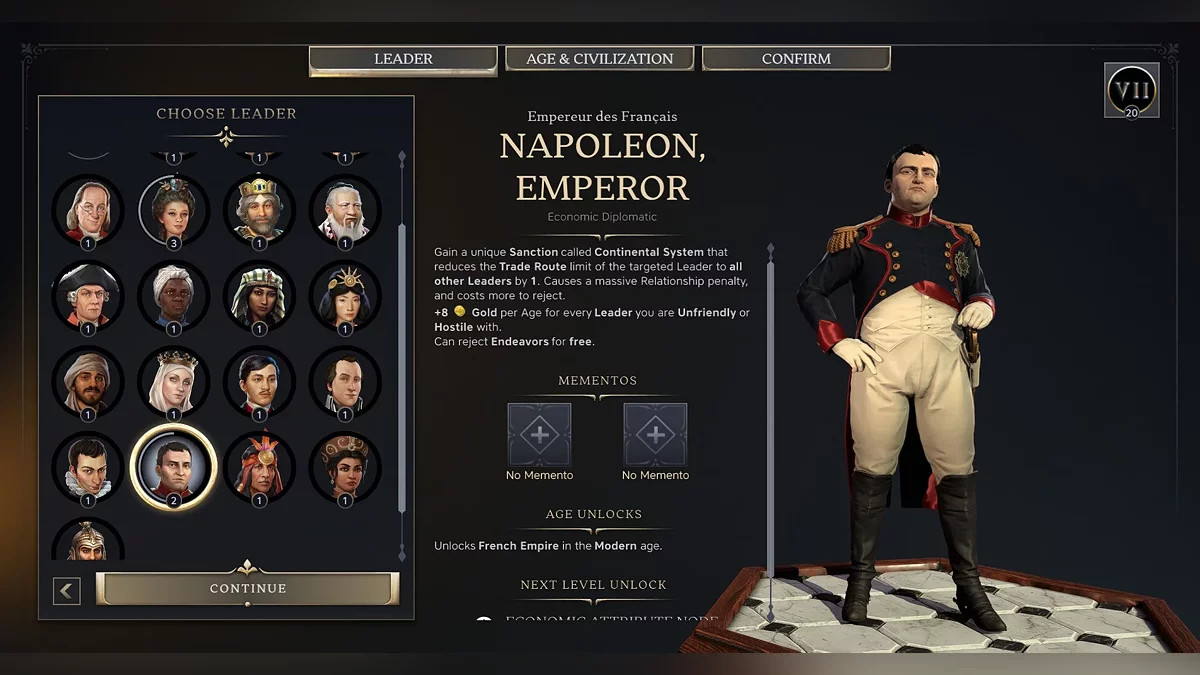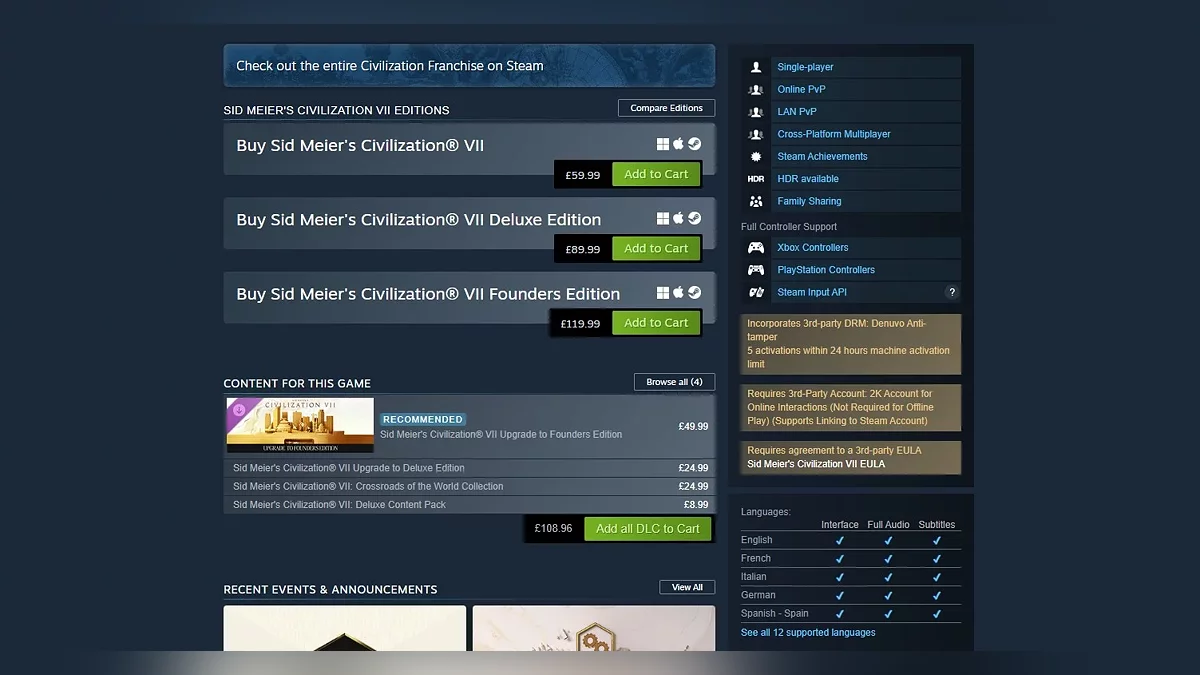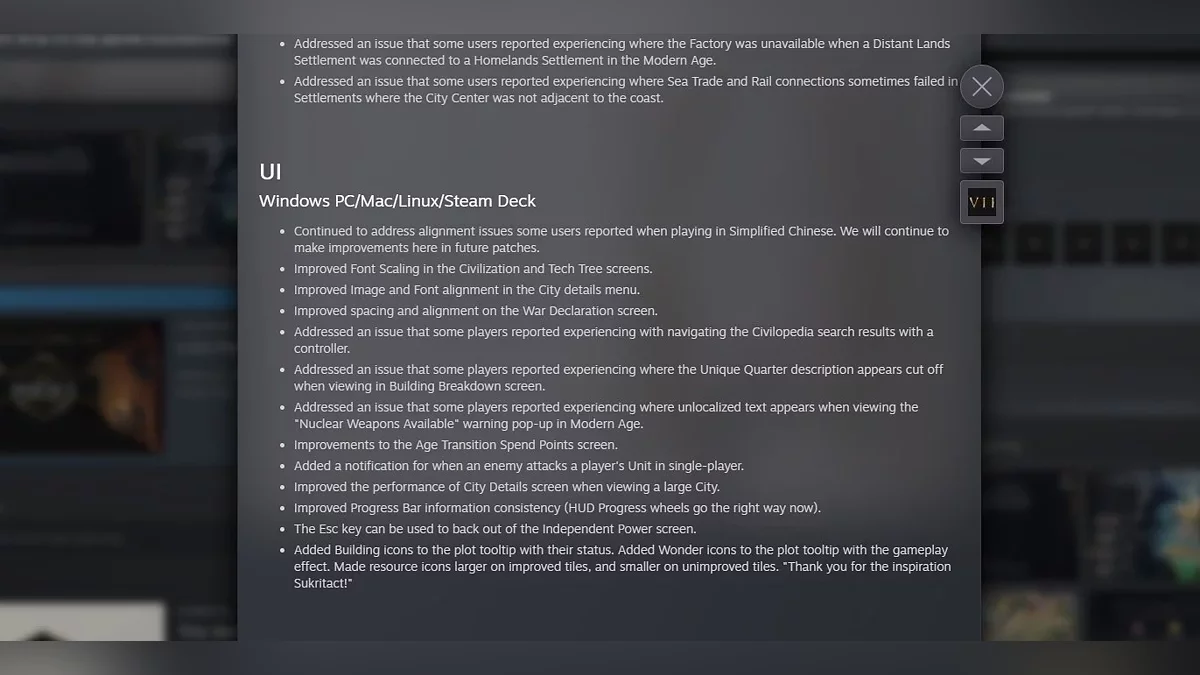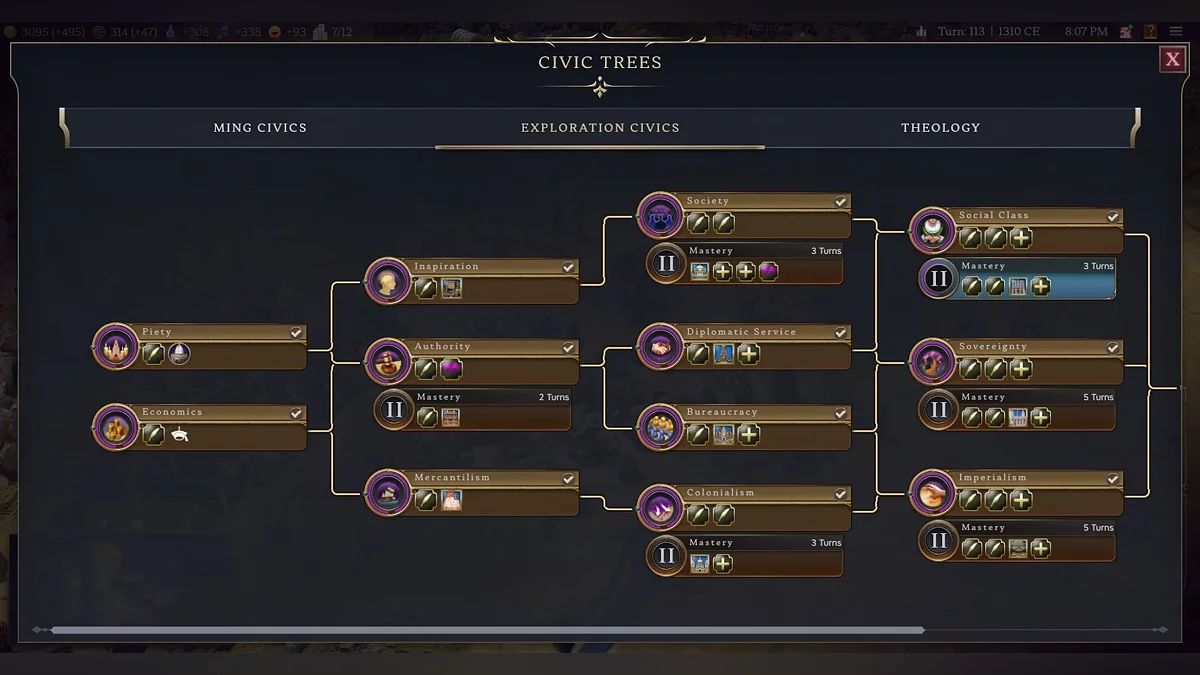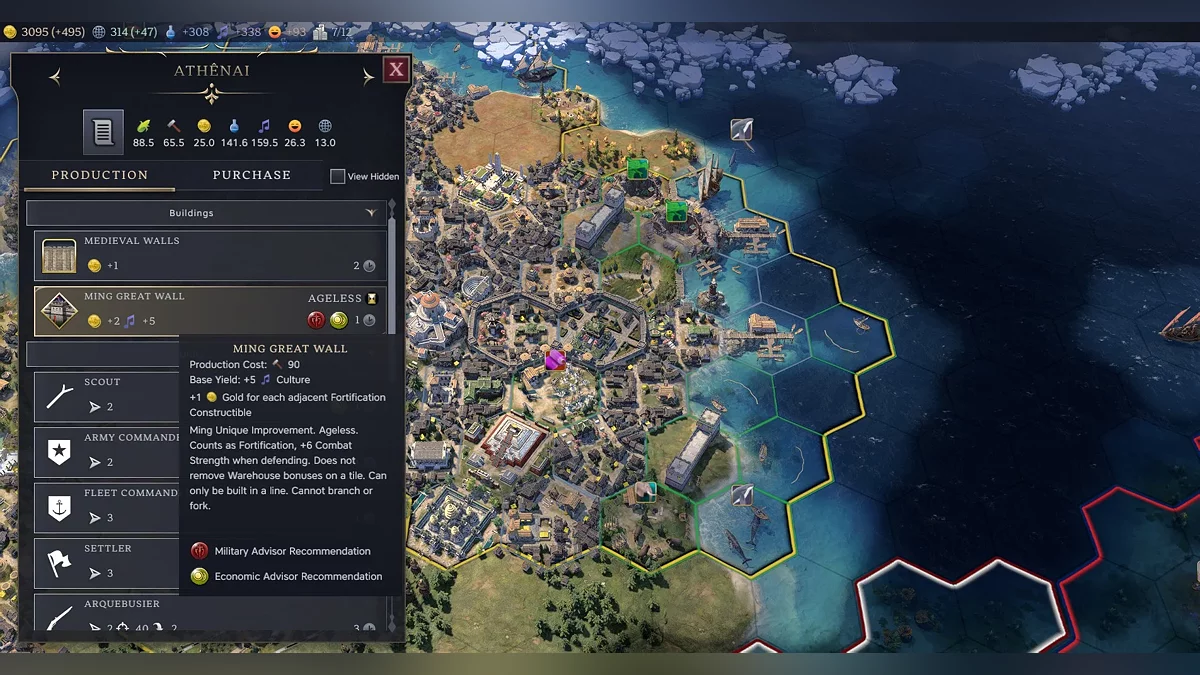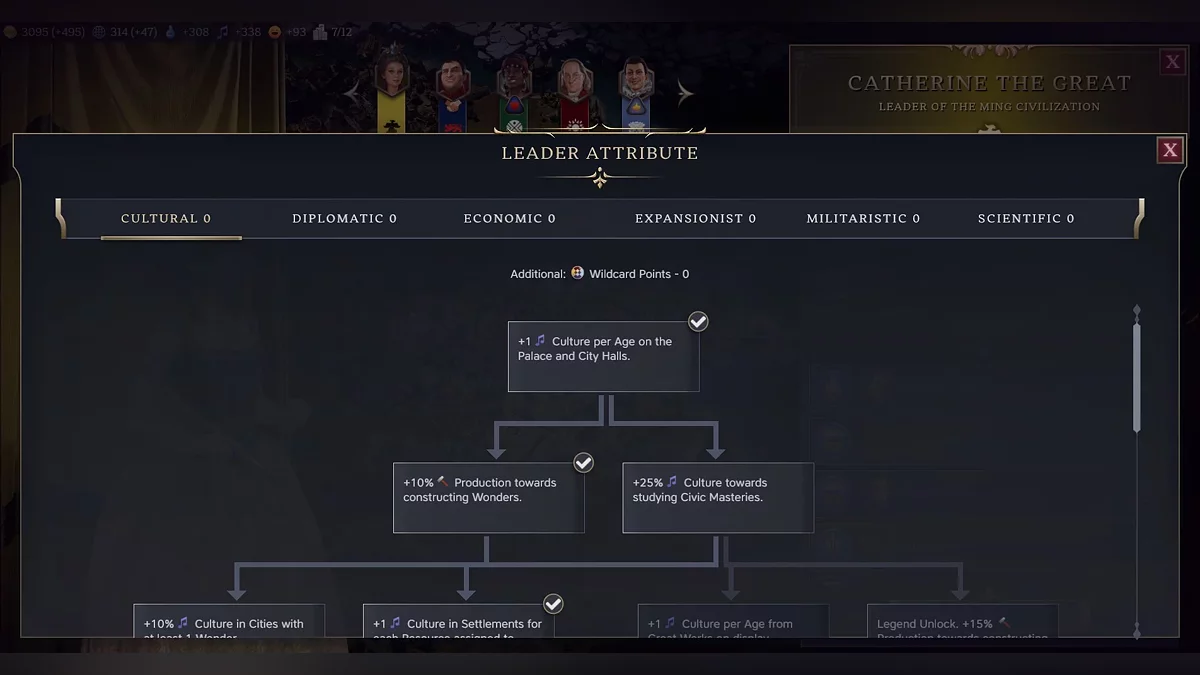Sid Meier's Civilization 7 Review: It Could Become One of the Best in the Series, But in a Couple of Years

For fans of the series, and the industry in general, the release of a new Civilization is always an event. The iconic strategy game has never lacked attention, so when Sid Meier's Civilization 7 launched, it easily shot up to the top of Steam's bestsellers list. However, players were not happy: on the day of the early release, the game had only 39% positive reviews. What happened?
After getting to know the game, we can say that it is, dare we say it, bold. Instead of sticking to the old and proven formula, Firaxis took the previous mechanics and shook them up without mixing. The resulting cocktail is, at times, very exciting, and at others... well, let’s not get ahead of ourselves. Here’s our review of Sid Meier's Civilization 7 and it's issues.
What Were We Expecting?
Personally, we always felt that the sixth installment, though deep and interesting, lost its way in a few areas. In particular, the game’s visual style bothered us: cartoony and overly simplified when it came to rulers and units. The attempt at realism that Civilization V achieved seemed much more appealing. We feared that the seventh game would follow the same trendy “stylization.” So, when the first screenshots of the seventh installment were revealed, it felt like a huge weight had been lifted off our shoulders. The giant heads and scary faces were a thing of the past!
Which visual style do you prefer?
But when it came to gameplay, we didn’t want to see a “copy-paste” approach. We wanted something new. Something that would make us rediscover the series. And it seemed like the game would disappoint here — we’d get the same thing again, only now with a "7" on the box. We admit, we were wrong. There’s a ton of new content in the game, and much of it is actually good. Let’s start there.
The Old and the Interesting New
The main change, something the developers talked about even before the release, is that there are now only three eras: Antiquity, the Age of Discovery, and Modernity. The rulers’ bonuses may vary from era to era. Some start with a massive boost but are weaker in the later eras, while others are the opposite.
Moreover, the rulers are no longer tied to countries: you now select the hero and civilization they will lead separately. Unfamiliar but interesting. Sometimes even the strangest combos can create powerful synergies.
When we first played the game, we chose a returning ruler—Catherine II. She last appeared in Civilization V and was very powerful, perhaps too much so. In terms of bonuses, Russia was hard to compete with, and to be honest, the situation is similar in the seventh installment. The Empress has extremely strong bonuses to science and culture, two pillars of civilization development.
One more new addition that caught our eye while choosing a ruler: "Mementos" These are artifacts you can unlock during the game. However, you need to log into your 2K account for them to appear. This adds a meta element to the game, a progression not just within a single playthrough but across your total experience. Some of the bonuses are pretty impressive, but we’ve played without them for now.
When it comes to choosing a country, there are strategic, geographical, and historic choices. The developers focus on countries that best fit the ruler in the context of their biography.
We too made a “strategic” choice and chose Greece. The developers mention it makes sense, as Catherine was inspired by Greek ideas. However, we were more drawn to the cultural bonuses. And so, the game begins.
Confusing, Yet Intriguing
At first, everything seems quite familiar. We spawn on the map with a settler unit, but without the usual starting warrior squad. For some reason, the developers decided to leave us defenseless. In fact, this makes sense: there are no barbarians in the traditional sense in Civilization VII.
Instead, Firaxis has “mixed” the barbarians with city-states. Now, on the map, you can find hostile independent villages of various types. Some behave aggressively, while others will only attack if you get too close. You can establish friendly relations with all of them, and just like in the sixth game, help them grow into city-states and make them your vassals. But before, you needed money for this, and now— influence.
In the cold tundra—where Catherine II’s journey begins thanks to geographical bonuses—Athens appeared. We start to get acquainted with how the city-building mechanics work in the seventh “Civilization.” And once again, we realize everything is different. Workers no longer exist, and instead, each time a new citizen appears, you need to choose which tile to improve.
Districts are a thing of the past. Now, it’s all about gradually constructing buildings. Interestingly, you can place several buildings in one tile. Sometimes their adjacency gives bonuses, but that’s a rarity. In the beginning, this new system seems both simpler and more confusing.
On the one hand, you don’t have to worry about micromanaging workers, which could become a real headache in the later stages of the game. We recall Civilization V: you had many worker squads, and if you let AI manage them, they’d make silly mistakes. In the new system, managing everything manually is a little more pleasant.
On the other hand, forget about the “beautiful” city layout—where cultural buildings are in one area and industrial ones in another. It’s not as intuitive as it was in the sixth game.
Also, when founding a new city (if it's not the capital), settlers now create a "town." This is a settlement with limited abilities where all production is turned into gold. You can later upgrade these towns into cities by spending money, and the more population they have, the cheaper it is. It’s an interesting concept—you could even leave them as gold farms without upgrading them. However, in our opinion, Firaxis didn’t do the best job of explaining this concept to players.
The number of settlements you can control is now limited, somewhat like Stellaris or Crusader Kings. If you exceed the limit, your country will suffer severe debuffs to its mood. This could easily lead to rebellions. Fortunately, cities won’t be lost after three turns of low loyalty like in the sixth game, but people can still switch to other rulers. As a preview, a city belonging to an African ruler joined us this way. But now, the system is tied to mood and rarely reaches absurd levels.
Overall, the revamped system of settlements and city-states has positive impressions. If you’re lucky, you can quickly take an independent village under your wing and gain some very nice bonuses. Why lucky? Because if you meet a neighbor early, all your influence will likely go to them. Speaking of influence...
More Diplomacy
The system for interacting with other states has also undergone changes. Once again, the impressions are mixed: in some ways it’s more interesting, while in others it feels like it has been reduced.
In diplomacy, you can not only form alliances but also sign various narrower agreements that provide bonuses to both civilizations. You can boost almost all characteristics this way, so being friends with neighbors feels more advantageous than ever. But all of this will cost influence.
At the same time, you can no longer play the manipulator and pay a civilization to attack another. There’s no UN either — in Civilization V, it was fun to spy on leaders and influence their decisions, but this feature is absent here.
Overall, rulers seem to have little to say. They no longer interrupt your turn with things like “your army is so weak, it’s painful to look at.” Now, the game is limited to a modest notification about a country changing its attitude toward us. These comments used to be annoying, but now it’s clear that they added life to the AI leaders' voices. Well, maybe we have Stockholm Syndrome.
Espionage has also turned from a separate mechanic into a reduced appendage of diplomacy. It’s so limited that there’s suspicion Firaxis will add spies as a separate DLC. These suspicions have arisen quite often.
Trade no longer happens in a separate window like in past installments. Selling 40 units of coal to earn money for upgrading troops is no longer an option. Now, it’s all about traders. You must manually send them to specific cities to establish trade routes. The number of traders is now unlimited, but the number of trade routes to a particular country is limited, and this limit can be increased through diplomacy, again using influence. It’s not just for money but for resources.
No More Selling Extra Diamonds
Resources in Sid Meier's Civilization 7 work completely differently. They are divided into primary resources, which you use to boost cities, bonus resources, which you place in smaller towns, and empire resources, which affect the entire country.
Having several tiles with the same resource is now quite nice, especially if the resource provides good bonuses. For example, incense in antiquity gives +10 science. In the early stages, this is a godsend.
Now, trade routes need to be launched to import resources from other civilizations. The more resources, the better: they can boost morale, production, food, and culture. The key is making sure there are tiles in the cities for these resources.
In other words, resource management is now a separate gameplay branch. With each era, the list of available resources changes. Some disappear, others change characteristics, and new ones appear. In the research era, there’s a race for resources from far-off lands — namely, potential colonies on other continents.
Again, it’s an interesting system, building on familiar gameplay with new, exciting mechanics. This deepened economic layer adds purpose to the new victory type — economic victory.
Per Aspera ad Astra
The path to victory in the new Civilization is through, as mentioned, three eras. That means the game has gotten shorter, but also more challenging. There’s an era progress system that advances as states unlock new technologies and social institutions. Near the end of each era, you encounter a new mechanic that Firaxis seems to have borrowed from Paradox Entertainment — crises.
There are different kinds of crises. To avoid spoilers, I’ll only mention one — the epidemic. It’s an interesting example because the plague hits at the end of the era where, in pursuit of economic dominance, we had built bridges and trade routes with all our neighbors. And now, through these very traders, disease might reach us.
Here, players who have gotten used to leisurely skipping turns and established infrastructure might find themselves sitting on the edge of their seats. The country begins to fall apart before your eyes. Buildings break down, cities revolt, and — oh no! — the population flees, creating a new unit, migrants. You have to throw all your forces into containing the catastrophe, and quickly. Some might say it's pointless, but we’d say it’s interesting. It adds risk and balance to the game.
New Times, New Challenges
Another balance factor is that each era is like a major reset. While cities remain in place, with each new era, you need to choose a new civilization. So, you’ll have to develop many things from scratch and rebuild diplomatic relationships with neighbors.
Antiquity, the era of exploration, and modernity each have their own focus. In one, it’s best to build wonders at a rapid pace, in another — colonize other continents, and in the third — dig for artifacts with researchers. Depending on the development path you choose, the tasks will vary. And how you handle these tasks determines the initial bonuses in the next era.
Some didn’t like this approach, but we found it more balanced. In previous installments, catching up to the leading civilizations after falling behind was almost impossible. Now, the maps are constantly shuffled to keep the game interesting. Although, some aspects still remain as boring as ever.
War
In terms of warfare, Civilization 7 keeps things pretty stable. The ability to bombard enemies from cities has been removed, but a garrison of ranged units can handle that task. Plus, you can now surround not just the city center with walls, but all districts as well. As long as there are fortifications in the settlement, it can’t be captured.
The AI still likes to wage war but doesn't really know how. It’s easy to win not only against a city-state but also a troublesome neighbor. However, managing an army has become much more enjoyable. The reason for this is one key innovation.
The commander (or general, as they’re called in this installment) can now truly lead his troops. A unit has several slots for squads, so when you need to move the army to enemy borders, you won’t go crazy clicking on each squad individually.
Also, the commander can give orders, making multiple units attack a single target at the same time. It’s a small thing, but it makes the process much more enjoyable.
Another interesting feature is war fatigue. Well, it’s actually more about the level of support for the war from the population. It’s an intriguing mechanic, though it could have been deeper.
But what really struck us is that the war has become much more beautiful. The units and their animations are incredibly detailed, with each civilization having its own set. Zooming in on the camera to watch the tiny figures fight each other is more interesting than ever. In terms of detail, Civilization 7 shines. Buildings, units, leaders — everything is crafted with great care, and different buildings even have their own soundscapes. If you play, try zooming in on the city and listen. The level of detail is amazing. If only that was enough.
Not a UI, But a Tragedy
While you can only admire the tiny soldiers if you want, another element of the game is always visible — the interface.
It looks like it was hastily put together. There are major issues — design flaws that make it hard to intuitively figure out even the most basic things — as well as smaller annoyances like poorly placed numbers and letters. It feels like one of the most important elements of the game — the strategy — was rushed and finalized at the last minute.
Visually, the interface is just bland. Of course, this is subjective, but the game seems to try to imitate the aesthetic of old board games in the details, only to completely ruin it when it comes to the overall interface.
There’s also the absence of detailed rankings and leaderboards. This is just disrespectful to the fans!
Technical Details
Visually, Sid Meier's Civilization 7 impressed us. Maybe it just looks better compared to the sixth installment, but it’s such a relief to see human faces instead of cartoonish characters. The animations are lively and smooth, and the detail, as we mentioned, is truly a balm for the soul.
The sound in the game is excellent. From the sound design of buildings and units to the voice acting of the leaders. And the soundtrack! After the sixth, it's a significant upgrade. The Mongol main theme… you just have to listen to it.
There’s not much to say about the multiplayer mode, except that it works. To access the multiplayer, you need to link your copy to a 2K account.
Upon release, many complained about bugs, but we didn’t really notice them. Probably just luck — there's usually no smoke without fire. The game has been called unfinished, and we tend to agree. But for a slightly different reason.
When will the game be ready?
If we focus on the details, Civilization 7, as you may have noticed, has a lot to praise. However, the overall impression remains somewhat blurred, especially among longtime fans of the series. Why?
Because it feels more like a fragment of a game, rather than a complete one. Firaxis is already selling individual packs with leaders. It’s clear they’re cutting out content that should have been in the game in the first place, to sell it later as expensive DLC.
And unfortunately, this isn’t just a trick from the developers or their publisher, 2K. It’s part of a larger industry trend. How many similar examples are there? Crusader Kings 3, The Sims 4, even FIFA. You probably have some examples of your own. Firaxis has decided to cash in on the fans too.
So, the game leaves a distinct impression of incompleteness. Now and then, you come across something that makes you think — “oh, there’s probably going to be DLC here,” or “this will likely be patched soon.”
But this isn’t early access; it’s the official release from a company that’s been in the market for a long, long time. Yet, the impression is that this is a demo, and the actual game will be delivered later. Knowing the industry, probably in a couple of years.
So, right now, Civilization 7 is being sold on different platforms as not quite Civilization 7, but more of a glimpse of it. The game has experimented in many ways, and in our opinion, most of those experiments have been successful. It’s become more interesting, and the final stages of the game no longer feel as drawn-out and overloaded.
It’s a visual and auditory delight, but it still carries a feeling of incompleteness. This is the skeleton, which will likely grow into a full-fledged product in the near future and might even stand alongside its predecessors, possibly even surpassing them in some aspects. But, let’s be honest, for now, it’s an unfinished product. So, if you’re deciding whether to buy or not, we honestly recommend waiting.
Have you already played the new Sid Meier's Civilization?

